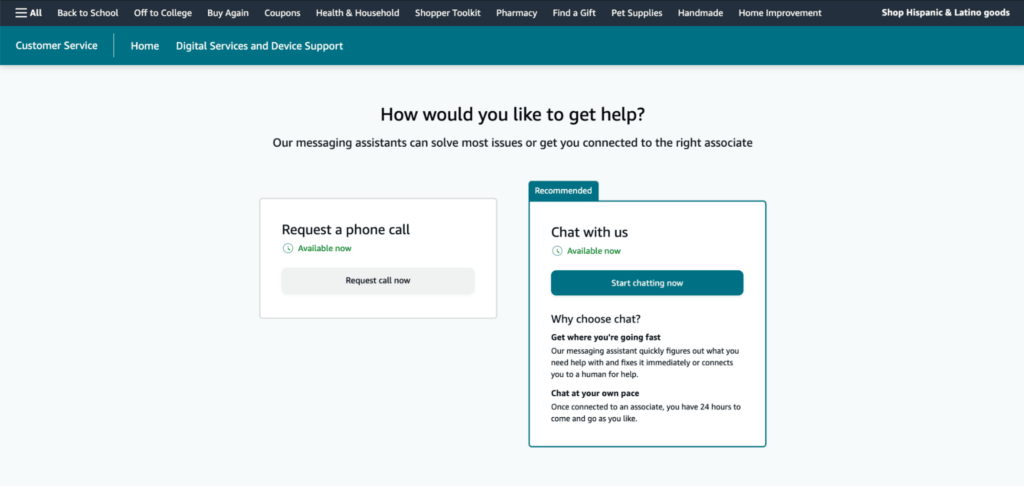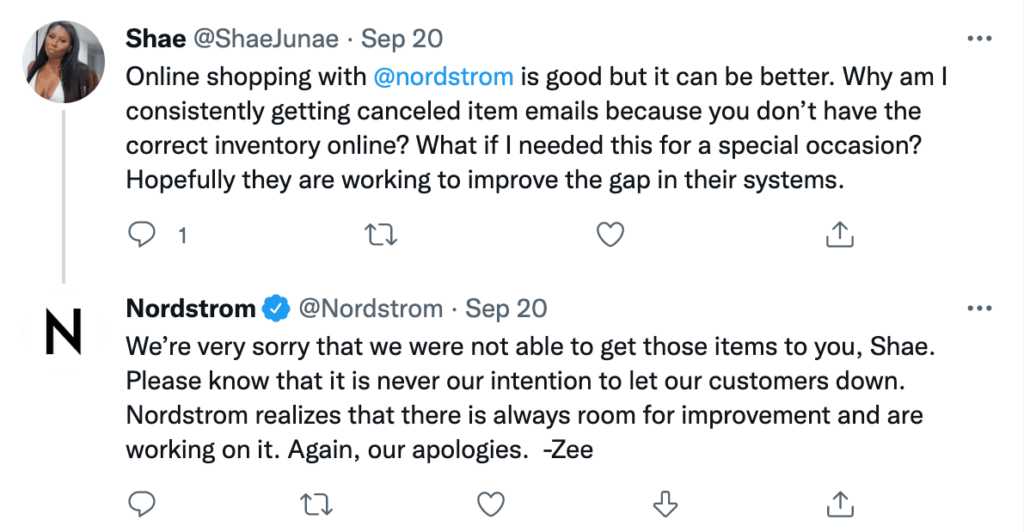Ecommerce customer service is a central aspect of any online business. This is a no-brainer, especially how reputation plays a crucial role in growing your business.
As an online store owner, you wouldn’t want to get stuck dealing with complaints and getting negative reviews all over the internet. This is why it’s crucial to establish a good ecommerce customer service team and processes.
In this blog, we walk you through the benefits of having good customer support and how you can make this a part of your business strategy to help grow your online store.
Ecommerce Customer Service: Definition and What It Covers
Ecommerce customer service refers to providing support to your online customers, from answering product inquiries to assisting customers with order processing. Seems pretty straightforward, right? But, in reality, customer support in ecommerce can be more complicated than the standard customer service in a brick-and-mortar store.
In a physical store, the customer journey is more straightforward, whereas buying from an online store involves different moving parts. This means there are also more and varying types of support you have to deal with. Here are the basic customer supports you’ll encounter:
- Product inquiries: When buying online, buyers can’t physically check your products. So your customers will most likely have questions about your products, such as color, sizing, or material. Your goal is to help your potential customers decide to buy from you by answering their questions.
- Order processing & shipping: Once your customer decides to buy from you, it’s important they don’t encounter any problem ordering from your online store. But, if there are issues, your ecommerce customer service team should be readily available to assist your customers.
- After-purchase service: With ecommerce, after-purchase service is very crucial. This can decide if your customer will buy from you again. Your ecommerce customer service team should be able to assist your customers with anything related to post-purchase such as returns, late deliveries, and exchanging items.
- Technical support: Ecommerce revolves around the technology you use for your online store. Your customer support team should be able to assist with any technical problem fast and efficiently.
Benefits of Having a Good Ecommerce Customer Service
Ecommerce customer service isn’t just about your customers. It’s an integral part of your business because it can make or break your growth and success. Done correctly, having good customer service can give you the following benefits.
- Builds Brand Reputation: Reputation matters greatly when running an online business, especially when you’re just starting. In fact, 3 out of 4 consumers trust a company more if it has positive reviews. More often than not, these positive reviews come from providing outstanding customer service along with excellent products.
- Builds Customer Loyalty: Your customer service team can help build customer loyalty, too. This doesn’t only give you higher revenue from repeat buyers but also enables you to save costs. In fact, it’s a proven fact that acquiring a new customer is five times more expensive than keeping an existing one.
- Saves Cost, Time, and Resources: Dealing with a frustrated customer or an escalated issue takes time and resources to unpick. The longer an issue goes on, the more it can damage your business’ reputation. But, having an efficient customer support team can quickly help you de-escalate and resolve the issue. Happy customer, less time and resources spent.
- Helps Increase Sales: This goes back to reputation and customer retention. A well-structured customer service team can help your business be more profitable. Ecommerce customer service that stands out can make a difference in how your customers perceive your business. This brings more customer engagement and sales.
- Differentiates You From Competitors: It’s no secret that there aren’t many differences between products and prices in some industries. That’s where outstanding good customer service comes into play. Your customer service can make your business stand out in a crowded market and can become your edge over your competitors.
Ecommerce Customer Service Channels and Tools You Can Use
What’s great about ecommerce is it allows you to reach and provide amazing customer service using various channels and tools. Here are some of them:
- Email and Live Chat: This should be the core of your customer service. You can choose between the two. But, some platforms allow both email and live chat, such as Intercom. New businesses might opt for email platforms like Zendesk to save costs. But, if you have the budget, you might want to start with live chat to build good relationships with your customers or potential buyers.
- Help Guides/FAQ Page: Your FAQ page or Help Guide should answer common questions. Be as detailed as possible. Include all information to help your buyers save time getting the necessary information.
- AI and Chatbots: AI and chatbots help shoppers find the information they need fast (usually done via live chat or email) without having to talk to one of your agents. If you plan on using this, ensure that your setup is structured properly. After all, your goal is to ensure your customers get the answer they need.
- Social Media Channels: Make sure that your ecommerce customer service team either has access to your social media platforms or that your support platform can integrate with your social media accounts.
- Phone Support: Phone support might feel a little old-school to some, but it blends a more personal touch. Make sure your phone number is on your website footer and contact page. If you have a small team, you can set up a voicemail. Your customers can leave their messages, and you can reply to them when your agent is available.
- Blogs: You might find this surprising as blogs are used for marketing and driving traffic to online websites. However, blogs can also be an excellent way to support your customers. You can write articles explaining how to use your products or topics that help your buyers choose the products you’re selling. You’re not only providing valuable information to your customers but also helping your site get more traffic.
How to Provide Top-Notch Ecommerce Customer Service That Grows Your Business
We covered ecommerce customer service, what it entails, and the many benefits it can bring to your business. But you can’t provide an unforgettable customer experience if you can’t set up your processes and build a team that works for you. So here are some tips to help you.
Create a well-defined omnichannel strategy
Using different communication channels allows you to provide multiple touch points for support. But, it does come with a disadvantage. Opening multiple channels to contact you means you also need the capacity to handle all the messages you receive.
The answer to this is having an omnichannel support strategy. With this, you can provide a coherent and efficient customer experience. In order to do this, you need to focus on two things:
- Communication channels: When deciding what channels to use, consider whether you can integrate them into a unified system. For example, Intercom allows you to integrate your Facebook page. So any message you receive on Facebook can be redirected to Intercom.
- Internal Processes: In some cases, you might not be able to integrate all your channels. Probably due to resource or cost restrictions. This is where having efficient internal processes is important. Your internal processes should ensure that everyone in your team can access information that the customer needs. So, regardless where your customer contacts you, anyone from your team can assist them.
Build an efficient and solid customer service team
Your omnichannel support strategy won’t work if you don’t have the right team members with you. Needless to say, hiring the right people is key in turning your ecommerce customer service as a part of your business strategy.
You want people who are helpful, dedicated and will go the extra mile to resolve customer issues in a way that works for the business. Those people on the team also need to be empowered to be able make decisions and reach out to customers, as well as see any solutions through.
Create customer service processes suitable for your business
One issue with ecommerce customer services is that large ecommerce retailers sometimes set the standard. Unfortunately, this isn’t always sustainable for smaller or starting ecommerce businesses.
Such high standards can mean that customers get frustrated and want to escalate issues more quickly than your team has the resources to deal with. This can lead to missed messages, slow response times, a lack of continuity, and the inability to make decisions which can cause further problems.
This is why it’s necessary to implement processes so you can cover all your bases. For instance, if your customer support team can’t handle 24-hour support, you may benefit from using chatbots while also being able to follow-up with them when your team becomes available.
The key to creating an efficient customer service process is understanding your business’ strengths and weaknesses. This includes your budget, resources, and team members.
Nail your user interface
Having a user-friendly interface for your online store can make a huge difference for your customers, and even for you. For example, if you have a good FAQ or Help Guide page, your customer can find what they’re looking for and you save time and resources from talking to the customer.
Customers always appreciate personal touch
Creating memorable customer experiences is your key to increasing brand awareness and customer loyalty. There’s no better way to do that than by adding a personal touch when providing customer service.
One way you can do this is by not always relying on canned replies when dealing with live chat or emails. Of course, it’s always helpful having canned responses.
But, instead of having your customer support team copy-pasting these responses, tell them to use these as ‘reference’ only. Make it a rule to have your customer service team write replies or chats from scratch.
Take advantage of customer feedback
Taking customer feedback on board is also important. This isn’t just for acknowledging your customers. But also, helps to continuously improve processes, systems, and ways of working. Long term, it also helps to reduce the number of complaints and concerns.
Follow-up with your customer
This is probably the simplest but can make a big impact on increasing customer loyalty. Keeping records of interactions and following up can help maintain continuity.
Make following up part of your internal process. At Pixc, even if we don’t get responses from our customers, we still do at least one final follow-up. This is to ensure our customers are all set and satisfied. Our customers always appreciate this. I’m sure yours will, too.
Setting and meeting customer expectations
Your customers expect you’re not only meeting their expectations but even exceeding them. Most of the time, you should be able to do this with the tips mentioned above.
Whether it’s about the response time or your delivery timeframe, you should be able to handle this as long as you have the proper process and efficient team with you.
However, there will always be some instances when things won’t go as planned. So, what do you do when this happens? Make them feel you’re on top of things. Instead of waiting for them to follow up with you, make sure that your customer service team will update your customer first.
Brands That Give Great Ecommerce Customer Service
Many brands are doing an amazing job using customer service as part of their business strategy. While some of the best-known are large ecommerce retailers, there are still some learnings that can be applied to ecommerce customer service for stores of any size:
Amazon uses live chat to ensure smooth customer interactions
When it comes to customer service, Amazon uses live chat and email support platforms with a “real person” at the other end. They make sure they can resolve issues and follow up with their customers right away.

They generally have a focus on customer satisfaction and making things as straightforward as possible so missed deliveries, faulty items, and problems are handled quickly with a standard resolution process. By having straightforward, smooth policies and processes Amazon representatives are empowered to make decisions on how to resolve issues.
Chewy integrates a personal touch
Pet store Chewy goes out of its way to treat its customers as individuals. The brand delights its customers by adding a personal touch, whether that’s noting a pet’s name or sending a hand-written note in some circumstances.
This is something that a store of any size can incorporate into its customer service processes to stand out and make a customer feel seen.
Nordstorm uses virtual ‘stylists’ on hand
Fashion retailer Nordstrom gives customers the help they need when they need it with virtual “stylists” on hand to help users with almost any shopping problem, including designer stylists, beauty stylists, wedding stylists, and online personal stylists.

They also offer free shipping, free returns, and mobile shopping to make it easy for their customers. They offer 24/7 live chat, email, phone, and social support. On Twitter, the company has been known to help customers out with issues that they didn’t cause, like delivery issues caused by the postal service.
Key Takeaways
Embedding ecommerce customer service as part of your overall business strategy can help you increase your sales, increase repeat customers and grow your business. It’s essential to build the right teams – whatever that looks like – and provide the right resources and channels for customers to get in touch.
Seeing any solutions or proposals through and offering a useful resolution to the customer are essential to providing good customer service as part of your ecommerce business strategy. Documenting processes and sharing the right information with your teams can make the difference between a consistent, positive customer experience and a bad one.








